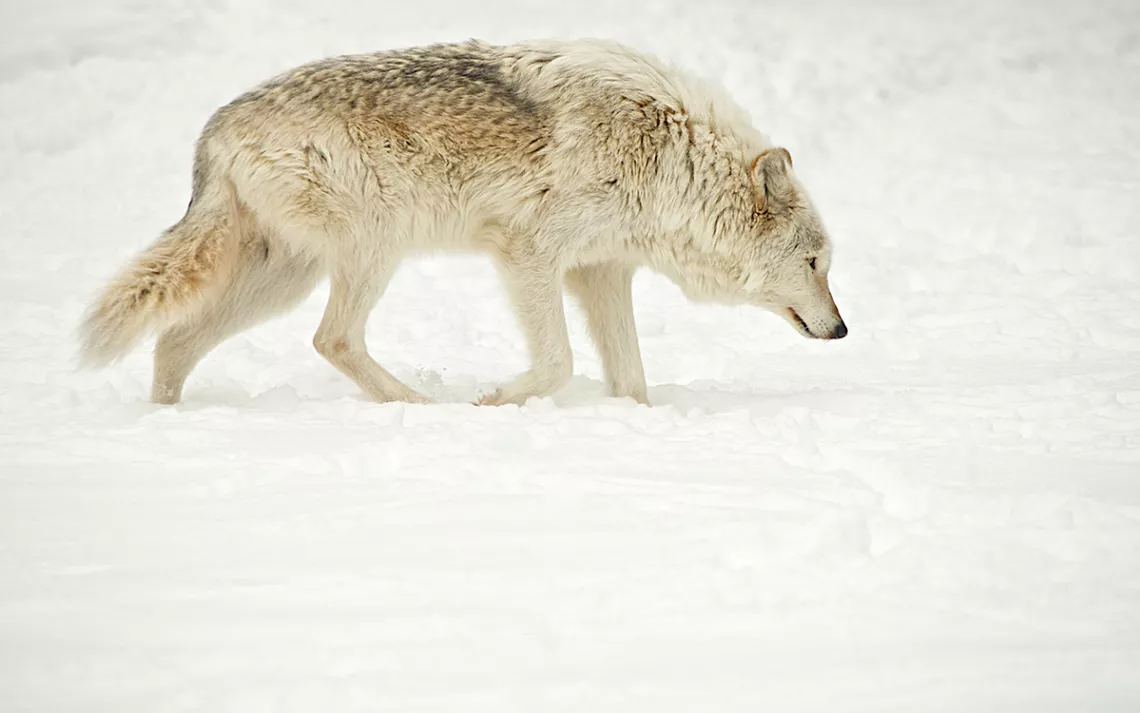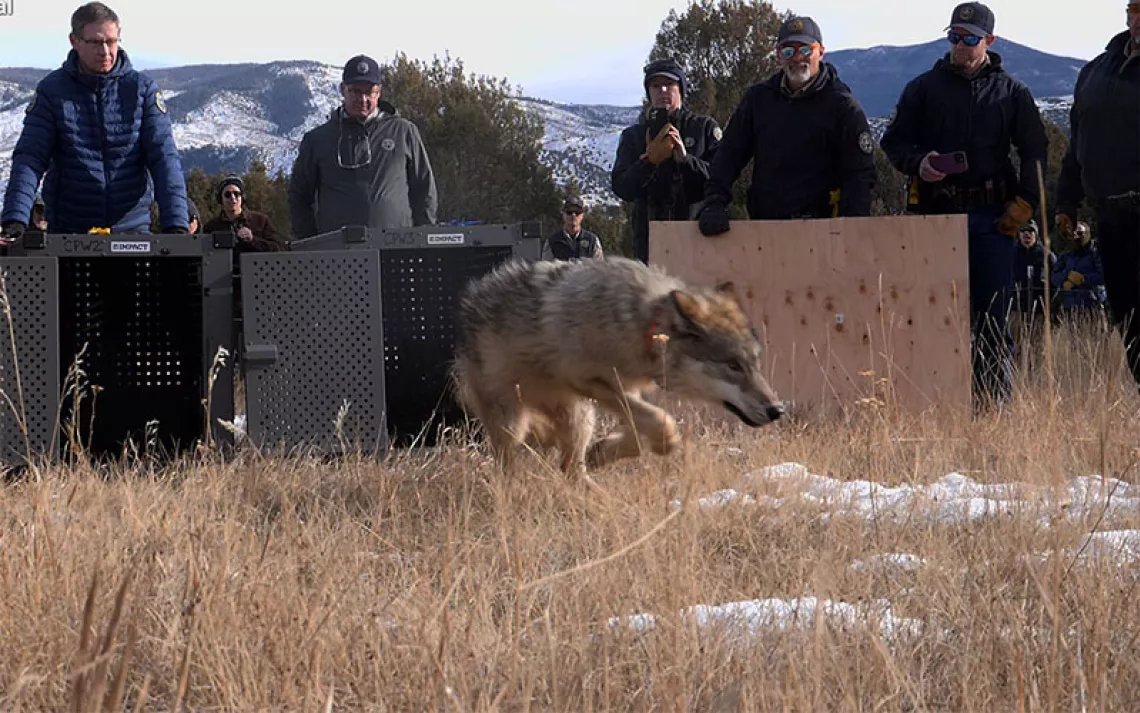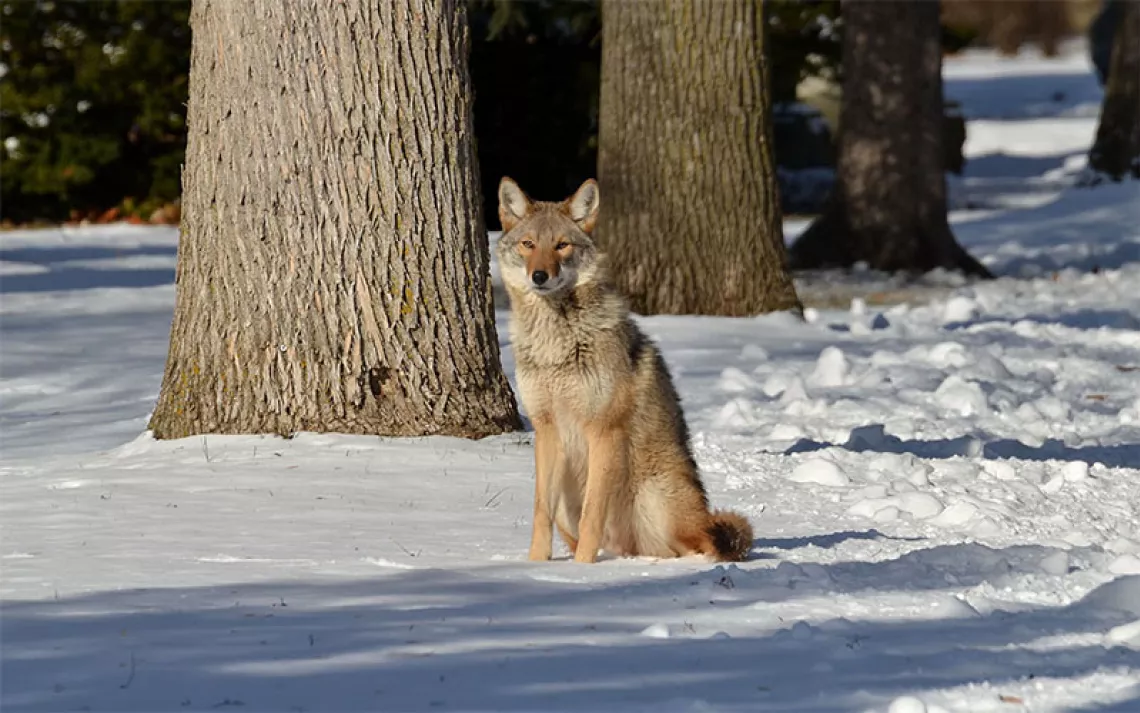Other States Seek to Emulate Wisconsin’s Wolf Massacre
Plans include hunting with dogs, ATVs, bait, snares, and helicopters

Photo by northwoodsphoto/iStock
In the course of three days in late February 2021, Wisconsin hunters killed 216 wolves, nearly 20 percent of the state's wolf population. The hunt was the result of a last-minute court order issued after the Wisconsin Institute for Law and Liberty filed a lawsuit on behalf of Hunter Nation Inc., a Kansas-based hunting advocacy group, because Wisconsin’s Department of Natural Resources (DNR) failed to hold a wolf hunt. Local tribes condemned the decision, urging tribal inclusion in the rule-making process. Conservation groups also opposed the wolf hunt due to the rushed process and lack of public input.
“This hunt represents an unprecedented and extreme departure from sound, science-based wildlife practices on the part of Wisconsin DNR and an insult to science, democracy, and good conscience,” says Elizabeth Ward, the director of the Sierra Club's Wisconsin Chapter.
Wisconsin is the only state that mandates a wolf hunt. Republican lawmakers and hunting groups in the state have called for an open hunting season ever since the Trump administration delisted wolves last fall. At first, the chances of a hunt being held this season seemed slim, since DNR decided to wait until the fall in order to include new population data into its wolf management plan. But the court order forced the agency to hold a hunt with just a week left in the season, giving them mere days to devise a quota. The DNR initially set a quota of 200 wolves but later reduced the number to 119 after tribes, who did not participate in the hunt, protested their lack of inclusion in the planning process. In the end, the DNR issued 2,000 hunting permits, almost twice the number of its 2020 estimate of wolves in the state, which was between 1,000 and 1,200. The abundance of hunters combined with the widespread use of dogs allowed hunters to blow past the quota, says Peter David, a wildlife biologist for the Great Lakes Indian Fish & Wildlife Commission.
Dr. Adrian Treves, a professor of environmental studies at UW-Madison and founder of the Carnivore Coexistence Lab, says the hunt was problematic for many reasons, but a few stand out. First, it throws off last year's wolf count, which would have been used to create a new wolf management plan. “The data is now unreliable because a wolf that might have been counted could very well be dead by now,” says Treves. Second, the hunt started at the height of the breeding season, hampering the population’s ability to recover since pregnant females were likely among the wolves killed. Third, the hunt failed to factor in the effects of poaching, a practice Treves warns is drastically underestimated. When accidental deaths and natural mortality are factored in, Treves estimates a population reduction when compared with last spring of 30 to 38 percent—a level of mortality far beyond what scientists say wolf populations can sustain.
Wolf advocates and researchers say this is why federal management is needed. “It's quite evident that whatever is happening right now is not working,” said Marvin Defoe, a Red Cliff tribal elder, on WORT radio. “My view is that we need to put [the wolf] back on the protection list.”
In the states where wolves are not protected, they are now being aggressively persecuted. In Montana, Senator Bob Brown, a Republican from Thompson Falls, introduced two anti-wolf bills that recently passed through a committee. One would essentially place a bounty on wolves, and the other would allow unlimited killing and the use of bait, lights, and night-vision equipment. Paul Fielder, another Republican lawmaker from Thompson Falls, introduced a bill to make trapping easier and allow the use of snares.
In Idaho, a state notorious for its antipathy toward wolves, a bill was introduced earlier this month with the aim of reducing the wolf population by up to two-thirds. It would do this by reclassifying wolves in a significant portion of the state as predators, which means they could be killed at any time of year without limitation. Hunters would be able to employ ATVs, snow machines, and helicopters.
“I understand the need for management of these species, and that includes ethical, fair-chase hunting using science to set mortality limits,” wrote Christopher Servheen, a wildlife biologist in Montana. “But these extreme anti-predator laws in Montana and Idaho are a relapse back into the dark ages of wildlife and nature exploitation.”
In Michigan, the agency that manages wolves is facing growing calls from Republican lawmakers to hold a wolf hunt like Wisconsin’s. And similar legislation was recently introduced in Minnesota.
These regressive laws couldn't come at a worse time, says Collette Atkins, carnivore conservation director and senior attorney for the Center for Biological Diversity. Widespread hunting has the potential to reverse 40 years of progress in wolf recovery, she says, disrupting pack dynamics and preventing dispersal to new areas.
The main justifications for wolf hunts, according to Treves, are reducing threats to livestock, increasing tolerance for wolves, and reducing poaching. To which list Peter David, the wildlife biologist, adds competition with humans for wild game species and supposed threats to human safety.
But according to state agencies, deer harvests are meeting or exceeding quotas. Regarding livestock, studies show that less than 1 percent of cattle are killed by wolves and that livestock are more likely to die as a result of weather or domestic dogs. According to Treves’s research, the indiscriminate killing of wolves can actually increase livestock predation by removing experienced hunters and forcing young wolves to target easy prey. With regard to public perception, public attitude surveys show that the majority of the general public has positive feelings about wolves.
“Some of these arguments on the surface might make sense, but when you look at them more carefully, they don’t hold up,” David says. “In the end, what this season is selling is the novelty of killing a wolf.”
Environmental groups are now urging President Biden to relist wolves under the Endangered Species Act. On January 20, the president signed an executive order that committed to reviewing the gray wolf’s delisting. Meanwhile, three separate lawsuits are challenging the Trump administration’s delisting, one of which includes the Sierra Club. Atkins says these lawsuits could take years to sort out, but the main takeaway from all three is that recovery is incomplete and unlikely to happen under state management.
Thus far, wolves have only recovered in about 10 percent of their potential range. For US Fish and Wildlife, the agency that manages endangered species, that’s enough. But wolf advocates believe we still have a way to go.
“What they've done is reduced the concept of recovery down to the concept of survival,” says Atkins. “That just isn't what the [Endangered Species] Act says, and it's definitely not the purpose. It's about recovery. There are lots of places where wolves once were and could live again.”
 The Magazine of The Sierra Club
The Magazine of The Sierra Club



